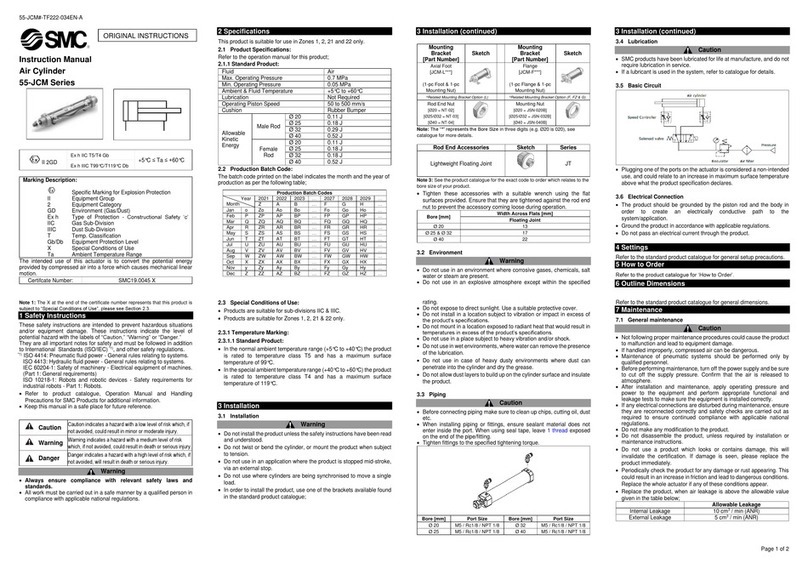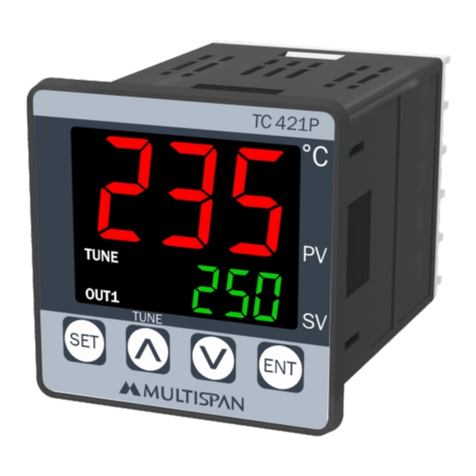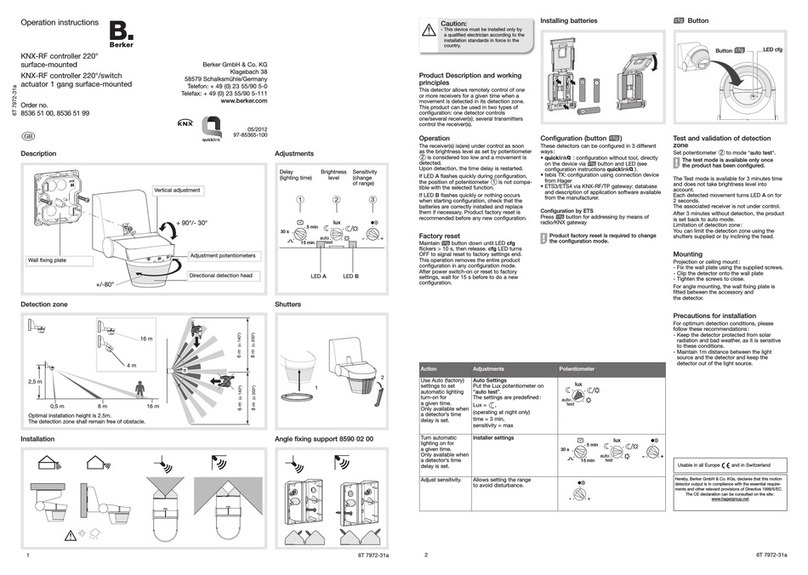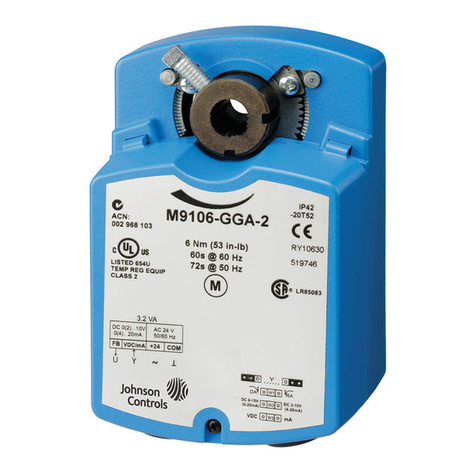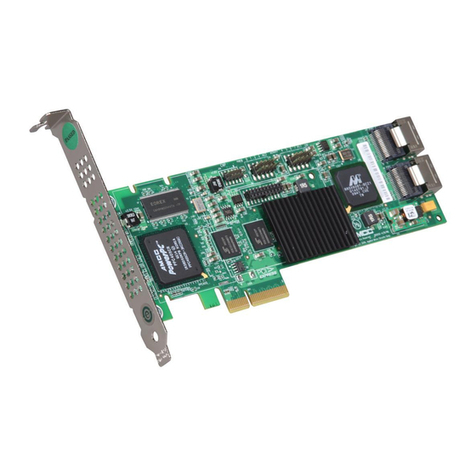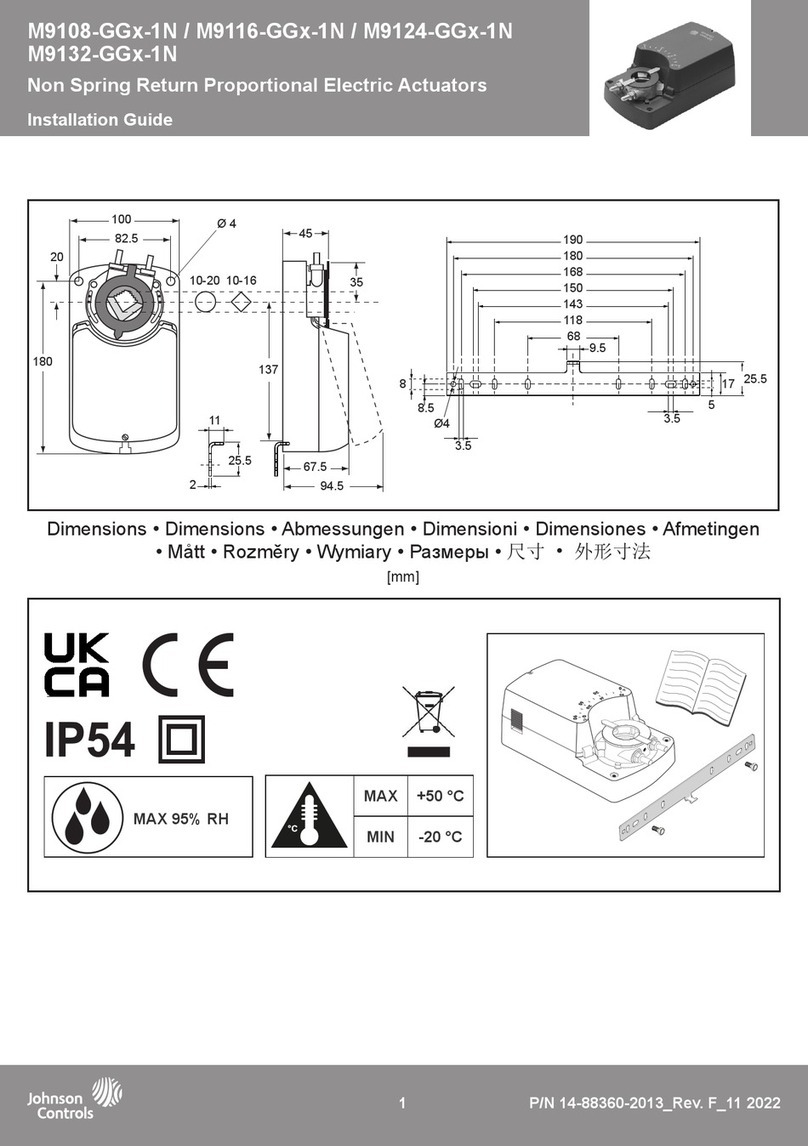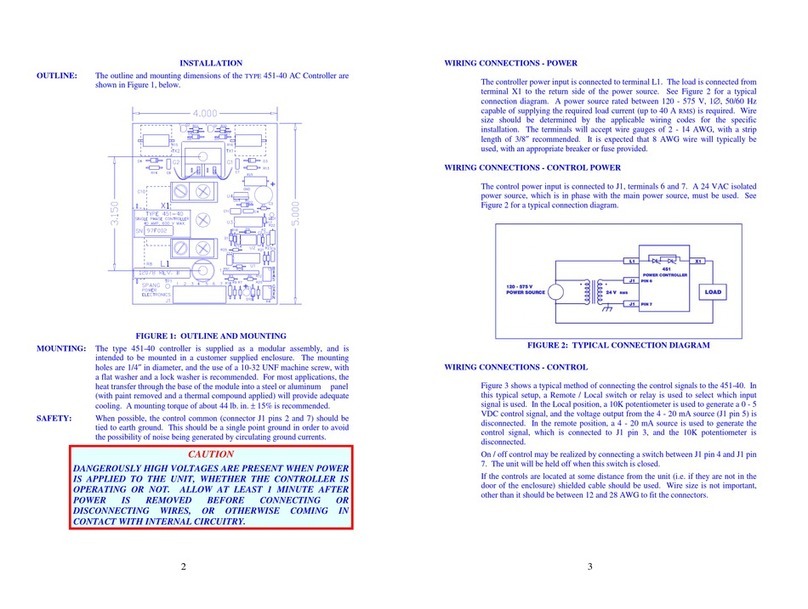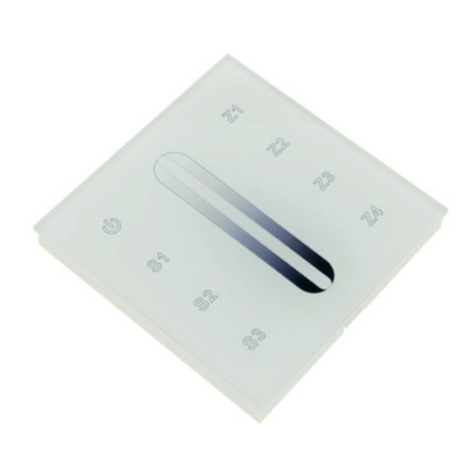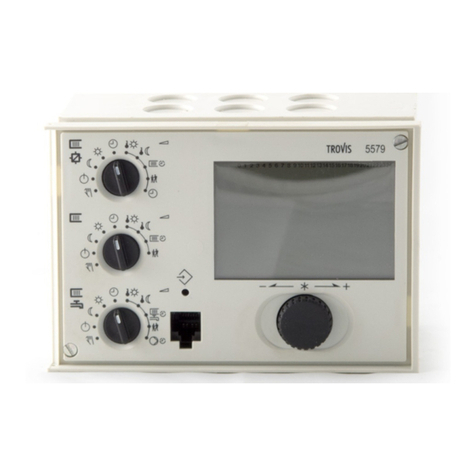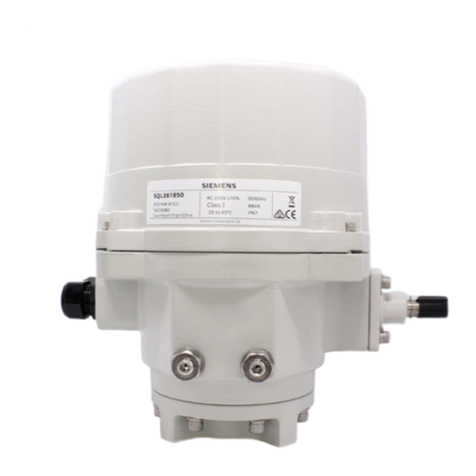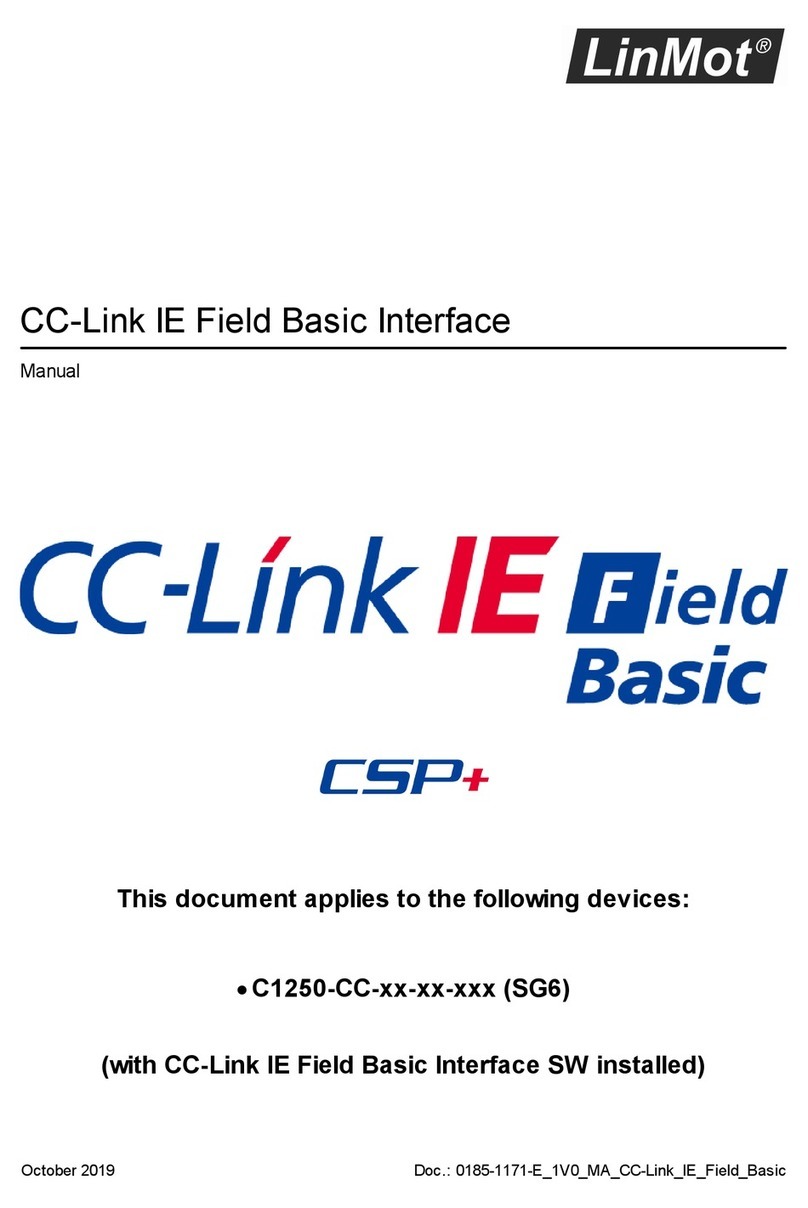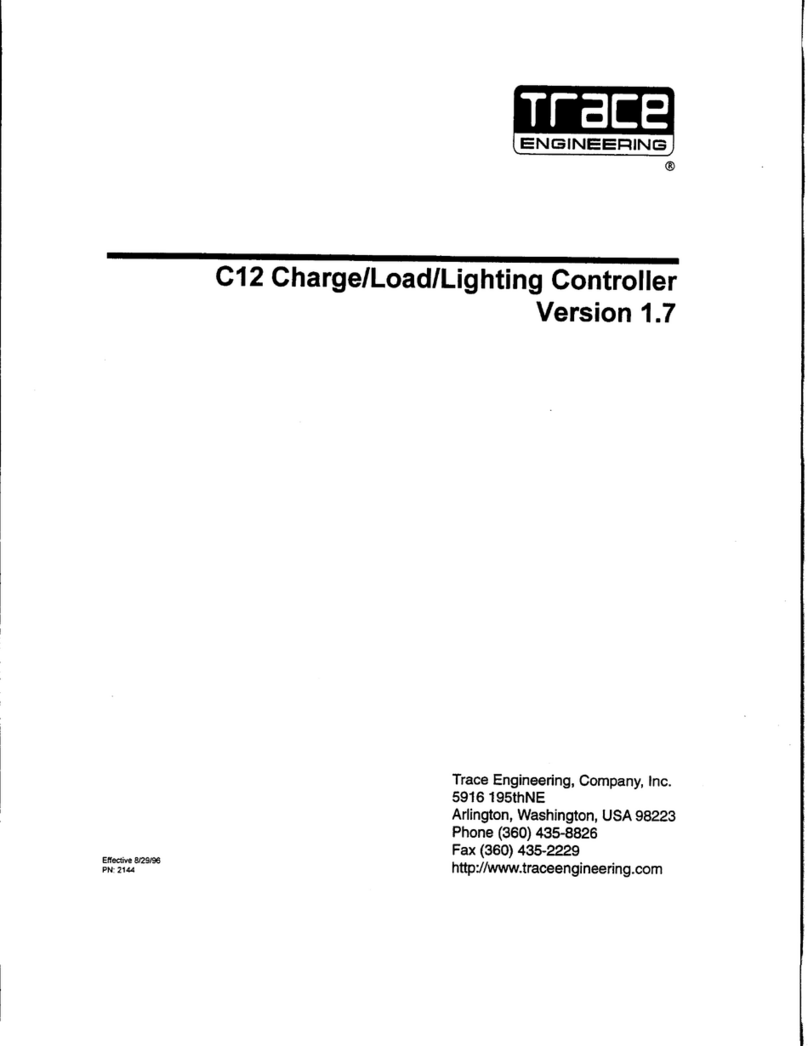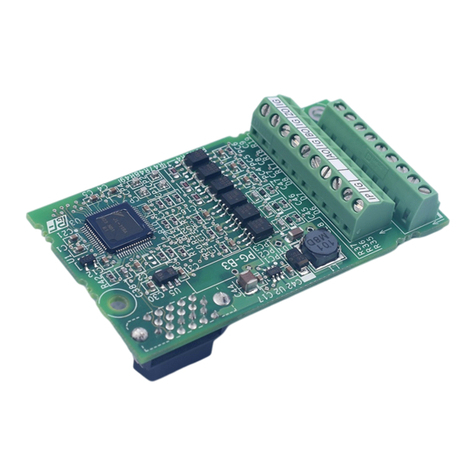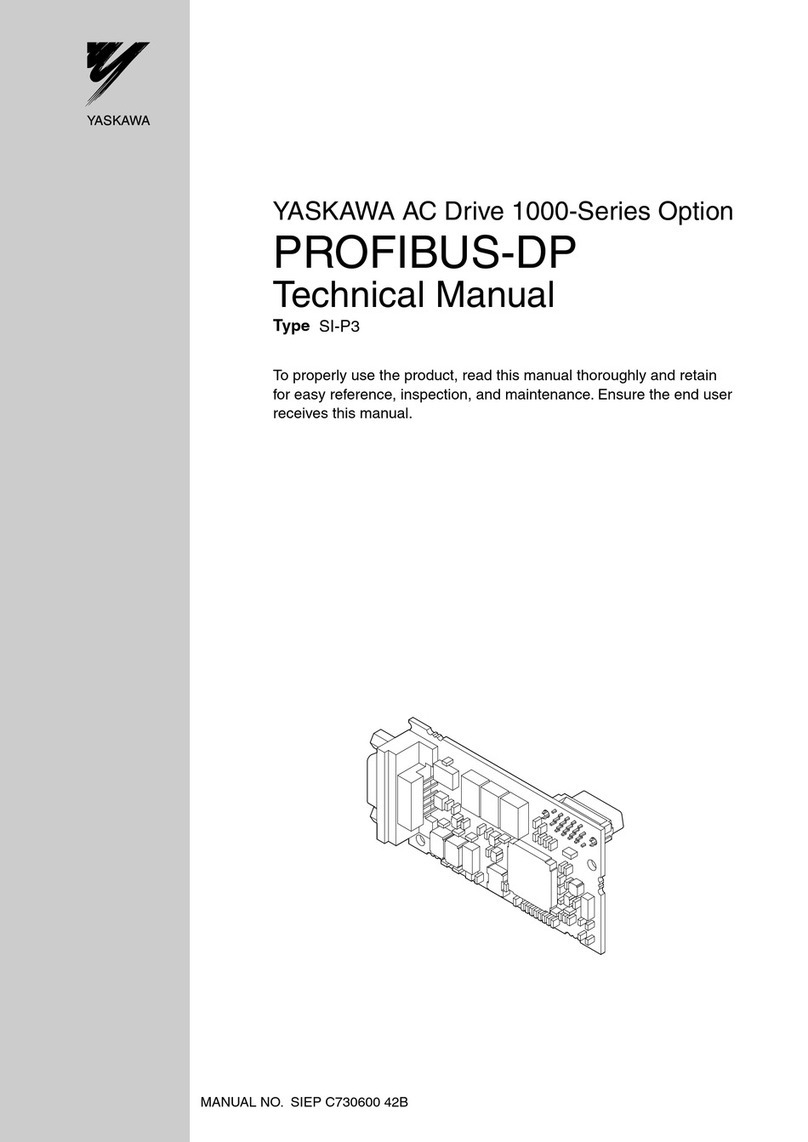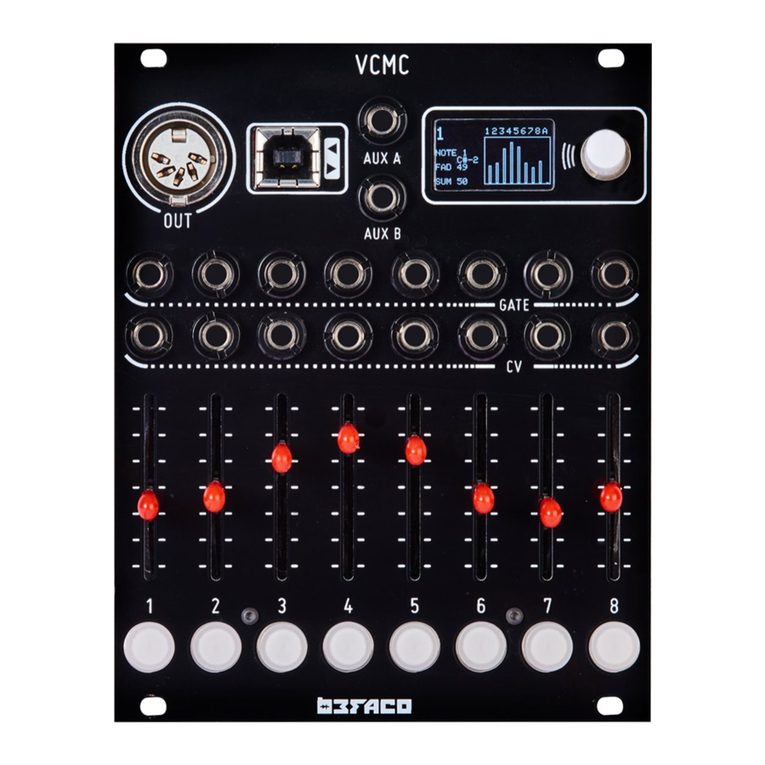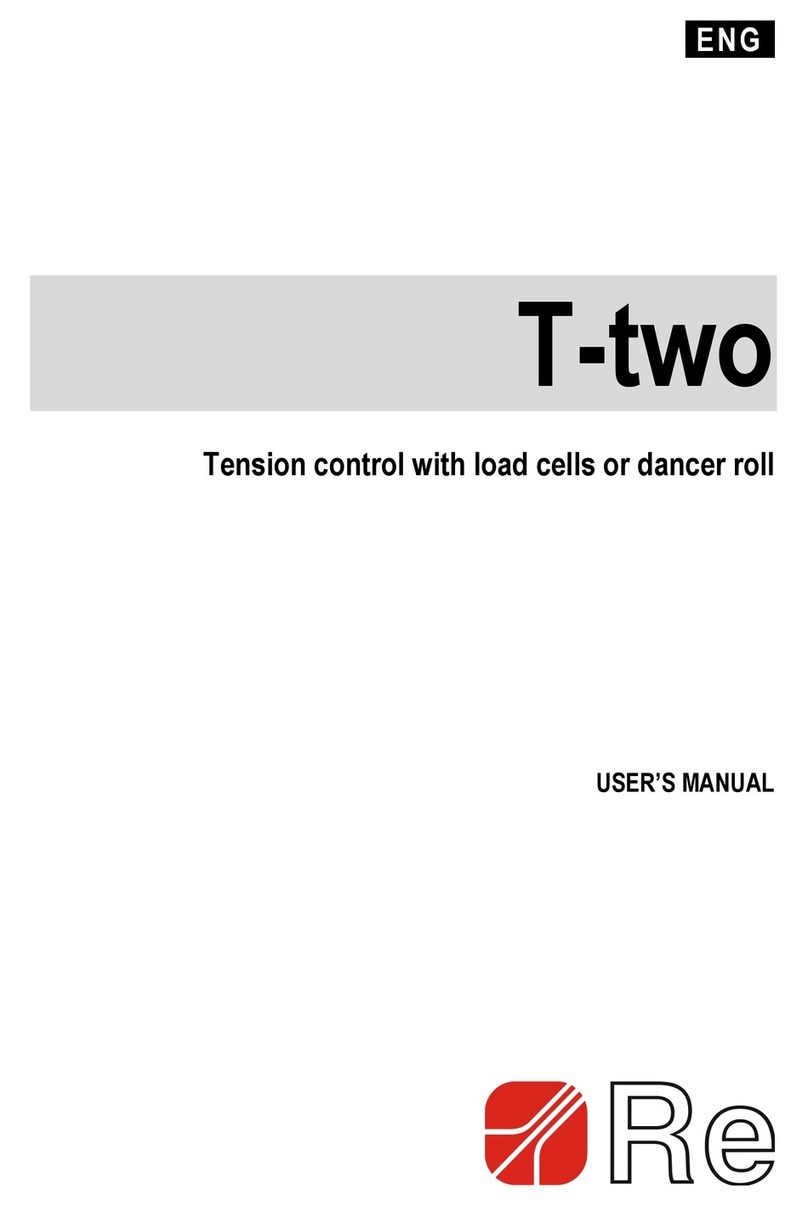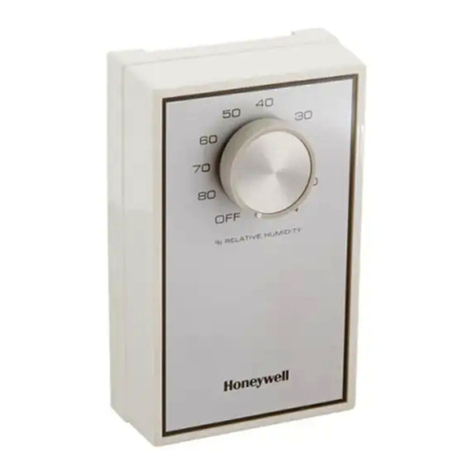
2 3
INSTALLATION
OUTLINE: The outline and mounting dimensions of the
TYPE
451-25 AC Controller
are shown in Figure 1, below.
FIGURE 1: OUTLINE AND MOUNTING
MOUNTING: The type 451-25 controller is supplied as a modular assembly, and is
intended to be mounted in a customer supplied enclosure. The mounting
holes are 1/4″in diameter, and the use of a 10-32 UNF machine screw,
with a flat washer and a lock washer is recommended. For most
applications, the heat transfer through the base of the module into a steel
or aluminum panel (with paint removed and a thermal
compound applied) will provide adequate cooling. A mounting torque
of about
44 lb. in. ±15% is recommended.
SAFETY: When possible, the control common (connector J1 pins 2 and 7) should
be tied to earth ground. This should be a single point ground in order to
avoid the possibility of noise being generated by circulating ground
currents.
CAUTION
DANGEROUSLY HIGH VOLTAGES ARE PRESENT WHEN POWER
IS APPLIED TO THE UNIT, WHETHER THE CONTROLLER IS
OPERATING OR NOT. ALLOW AT LEAST 1 MINUTE AFTER
POWER IS REMOVED BEFORE CONNECTING OR
DISCONNECTING WIRES, OR OTHERWISE COMING IN
CONTACT WITH INTERNAL CIRCUITRY.
WIRING CONNECTIONS - POWER
The controller power input is connected to terminal L1. The load is connected from
terminal X1 to the return side of the power source. See Figure 2 for a typical
connection diagram. A power source rated between 120 - 575 V, 1∅, 50/60 Hz
capable of supplying the required load current (up to 25 A
RMS
) is required. Wire
size should be determined by the applicable wiring codes for the specific
installation. The terminals will accept wire gauges of 2 - 14 AWG, with a strip
length of 3/8″recommended. It is expected that 12 AWG wire will typically be
used, with an appropriate breaker or fuse provided.
WIRING CONNECTIONS - CONTROL POWER
The control power input is connected to J1, terminals 6 and 7. A 24 VAC isolated
power source, which is in phase with the main power source must be used. See
Figure 2 for a typical connection diagram.
FIGURE 2: TYPICAL CONNECTION DIAGRAM
WIRING CONNECTIONS - CONTROL
Figure 3 shows a typical method of connecting the control signals to the 451-25. In
this typical setup, a Remote / Local switch or relay is used to select which input
signal is used. In the Local position, a 10K potentiometer is used to generate a 0 - 5
VDC control signal, and the voltage output from the 4 - 20 mA source (J1 pin 5) is
disconnected. In the remote position, a 4 - 20 mA source is used to generate the
control signal, which is connected to J1 pin 3, and the 10K potentiometer is
disconnected.
On / off control may be realized by connecting a switch between J1 pin 4 and J1
pin 7. The unit will be held off when this switch is closed.
If the controls are located at some distance from the unit (i.e. if they are not in the
door of the enclosure) shielded cable should be used. Wire size is not important,
other than it should be between 12 and 28 AWG to fit the connectors.
G2 G1
G2
11
1 2 3 4 5 6
J1
R1 R9 R7
GAIN
BIAS
R12
R4
U1
GND
INOUT
C1
RN1
1
C3
U3
C4
C5
D1
D2
U2
C2
R2
Q2 Q1R10 R11
D6 D5
C8R14
D4
C5
TX2
R15
R5
D3
R13
TX1
C6
R16
R8
C10
G1
C7
C9
LED1
TYPE 451-25
SPANG
POWER CONTROL
SINGLE PHASE CONTROLLER
4.000
25 AMP, 600 V MAX.
SN
U4
TP1
R17
R18
3.150
5.000
7
R19
R3 R6
R20
R22
R21
POWER SOURCE
120 - 575 V
24 VAC
ISOLATION
TRANSFORMER
L1
J1
J1
X1
451-25
POWER CONTROLLER
LOAD
PIN 6
PIN 7
